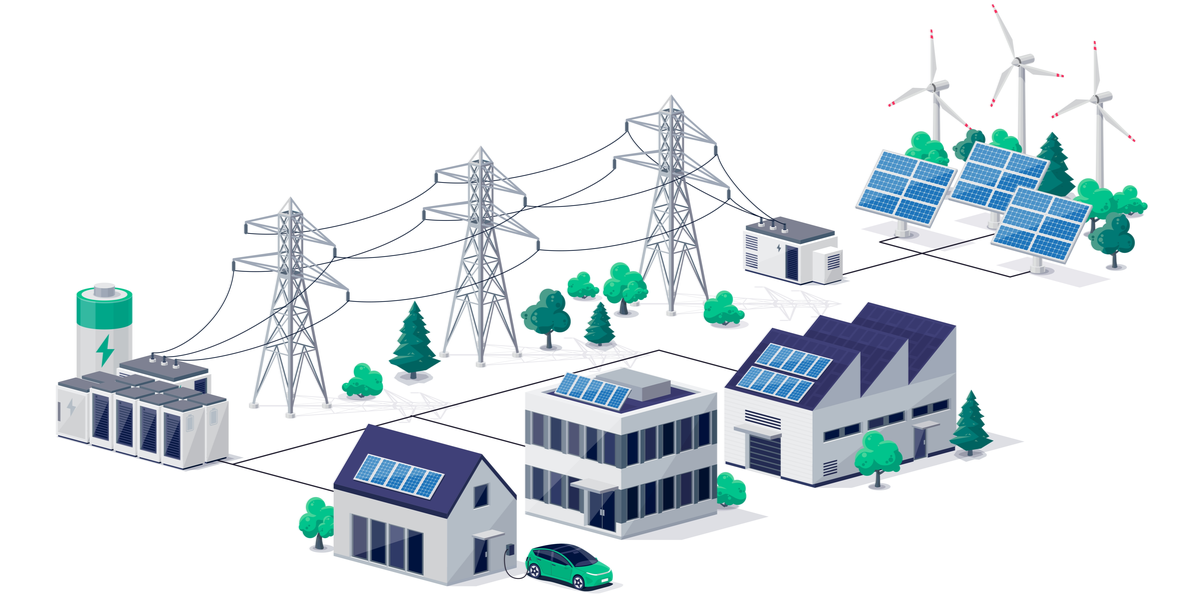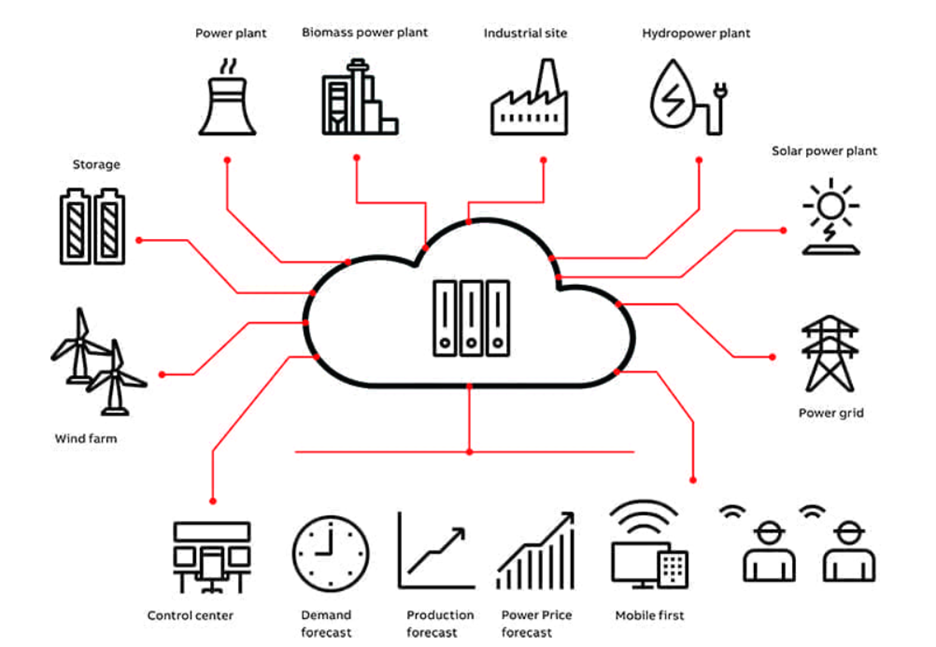Virtual Power Plants: Implications for an Active Efficiency Future
Let's Save Energy
Alliance to Save Energy's Blog

Two years ago, the COVID-19 pandemic shifted many aspects of our daily lives into the virtual world almost overnight. Now, we can hold virtual conferences and meetings with virtual friends using virtual computing systems hosted on virtual servers. The energy system is not left out of this ever-increasing “virtual-ness.” In recent years, virtual power plants (VPPs) have become one of the biggest buzzwords in energy circles. Is this a trend – or a sign of our future?
What are virtual power plants and why are they important?
According to the U.S. Energy Information Administration, the U.S. now generates almost 20% of its electricity from renewable sources such as wind, solar, and hydropower. Increased penetration of renewables into the energy mix means that balancing supply and demand in real time is becoming a challenge for grid operators. Since peak renewables generation doesn’t necessarily coincide with periods of peak demand, operators face periods when there is too much generation and too little load or vice versa. To meet this challenge, we need to better manage inherent flexibilities in demand to better follow variable renewable generation – whether from utility-scale sources or small-scale distributed generation or storage. Enter VPPs.
A VPP is an aggregation or network of distributed energy resources (DERs) such as solar rooftops, wind farms, storage units, and other flexible loads that interacts with the central entity responsible for managing electricity flow in the region. Peter Asmus, research director at Guidehouse Insights, said “any resource that can be sensed, touched, controlled and automated can be part of a virtual power plant.” As the power grid transforms, there is need to build upon the traditional mode of electricity generation dependent on centralized power plants to develop a grid that has smart and decentralized features allowing for bi-directional energy and information flow. Policies like FERC Order 2222, technological innovations, and new business models are rapidly accelerating what’s possible with VPPs.
The Department of Energy (DOE) pointed out in a report on electricity markets and reliability that “one of the greatest challenges to integrating variable renewable energy (VRE) lies in managing its effects (variability, uncertainty, location specificity, non-synchronous generation, and low-capacity factor) on grid operations and planning.” The flexibility enabled by VPPs is an emerging potential solution alongside traditional generation, transmission, and distribution infrastructure for addressing these challenges.

VPP schema: A variety of resources can be incorporated into a virtual power plant (VPP). Special software and analytics can then be used to dispatch aggregate capacity on the energy market. Courtesy: ABB.
How can VPPs advance Active Efficiency?
Demand flexibility – the voluntary, technology-aided reduction or shifting of customer electricity usage – is central to the promise of Active Efficiency. If you haven’t already, learn more by checking out the Active Efficiency Collaborative’s recent report on evaluating the benefits of demand flexibility.
Resources located close to customers that provide predictable grid assets make flexible demand and load possible. Deployment and coordination of VPPs can reduce peak period demand and provide supply to satisfy energy, capacity, or ancillary service needs. In a sense, the more ubiquitous VPPs are, the earlier we can begin to reap the benefits of Active Efficiency in the residential and commercial sectors. VPPs’ contribution to demand side management (DSM) can be summarized as follows:
- Load Shifting and Emissions Reduction: VPPs enable real-time shifting of residential, commercial, and industrial loads to provide demand side management services to grid operators based on price signals. Done right, this will reduce the demand for high-emitting power plants and reduce carbon emissions.
- Balancing services: VPPs can use software and other optimization platforms to provide a range of ancillary services, increasing the system’s flexibility to accommodate intermittent renewable energy resources like solar and wind. They can also be used to provide voltage control, reactive power, and frequency control. These could not be achieved with large coal or nuclear power plants.
Despite these advantages, VPPs still face major hurdles ranging from customer access and acquisition costs to data flow, privacy, and systems integration requirements. But there are reasons to be optimistic. According to a report completed by Wood Mackenzie in 2020, the combined capacity of DERS will reach 387 GW by 2025 and total $110 billion in cumulative investment between 2020 and 2025. The DOE’s Loan Program Office is also currently working with creditworthy partners for its VPP initiative to accelerate adoption of VPPs across all potential customer and technology segments.
VPPs give us the ability to manage the grid at a local level and incorporate a variety of cleaner generation assets. This will facilitate the move toward a smarter grid and an Active Efficiency future that can meet the demands of decarbonization while maintaining the reliable and affordable energy that is expected in the modern world.
STAY EMPOWERED
Help the Alliance advocate for policies to use energy more efficiently – supporting job creation, reduced emissions, and lower costs. Contact your member of Congress.
Energy efficiency is smart, nonpartisan, and practical. So are we. Our strength comes from an unparalleled group of Alliance Associates working collaboratively under the Alliance umbrella to pave the way for energy efficiency gains.
The power of efficiency is in your hands. Supporting the Alliance means supporting a vision for using energy more productively to achieve economic growth, a cleaner environment, and greater energy security, affordability, and reliability.



